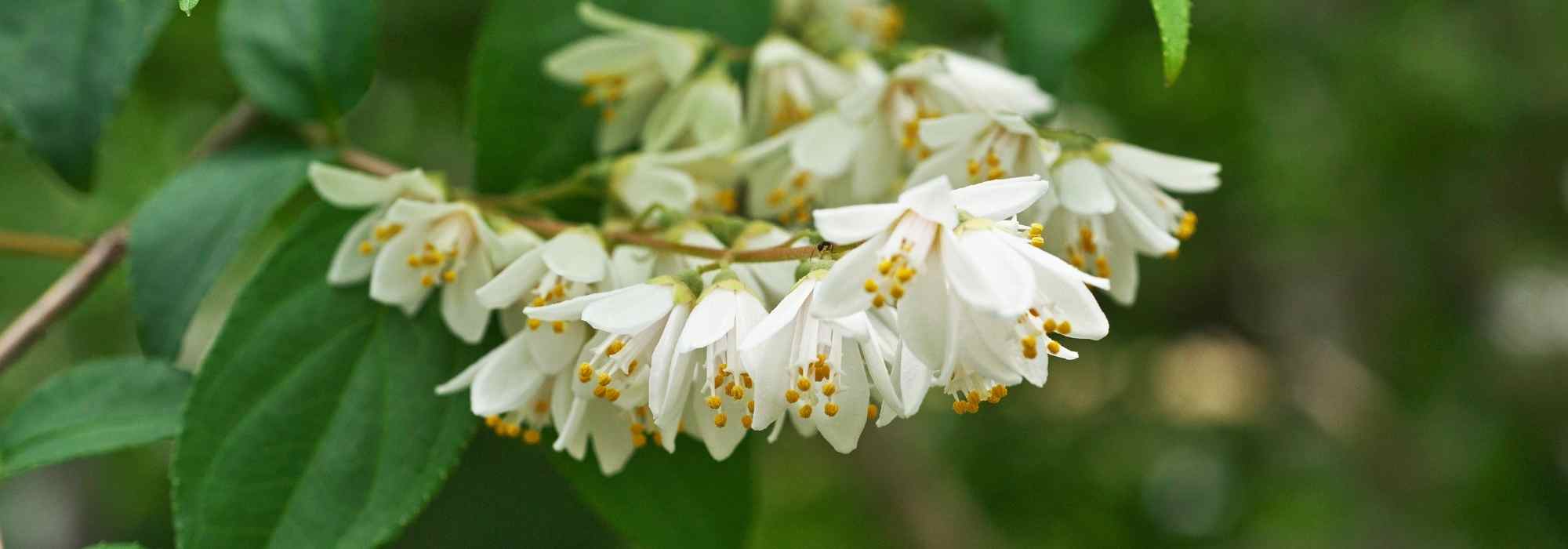
What can be planted on a west-facing terrace?
Our tips for flowering and greening your sunny afternoon terrace
Contents
A west-facing terrace benefits from partial sunlight in the afternoon, but experiences significant heat, especially in summer. Depending on the orientation towards the south and the type of terrace covering, this exposure can even become scorching. A west-facing terrace also endures fairly regular winds. This is a perfect location for plants that tend to suffer from late frosts, as their leaves will not burn and their flowering will not be compromised, and they will not be afraid of the wind. Whether they are bushes, perennials, or climbing plants, they must perform well in pots, without requiring too frequent repotting, and include several evergreen specimens to ensure the most enduring decor possible.
Here are some ideas for plants that thrive in partial shade and appreciate enough midday sun to adorn your terrace with enchanting foliage and blooms…
Perennials
You can count on versatile plants in this west-facing exhibition that thrive in partial shade and several hours of daily sunlight. Flowering will generally last longer in this mixed situation. Among these, you will find:
-
Arum
Arums are extremely interesting perennials in pots as they thrive well, benefiting from a substrate that remains consistently moist when choosing a container without drainage holes. They appreciate both sun and shade, with a west-facing exposure being perfectly suited for them, as they will bloom a little longer than in full south-facing conditions. Installing Arums on your terrace immediately adds an exotic touch with their large, lush foliage, refreshing with the whiteness of the stunning inflorescence cones, and a lot of graphic appeal due to the very structure of this plant. Opt for a giant variety like Zantedeschia aethiopica ‘Himalaya’, which can reach over 1 m in height, ensuring a beautiful effect on the terrace with its white-speckled leaves and a renewed flowering from May to September. The foliage will disappear in winter in colder regions, only to reappear in the warmer days. It is best suited for milder regions.
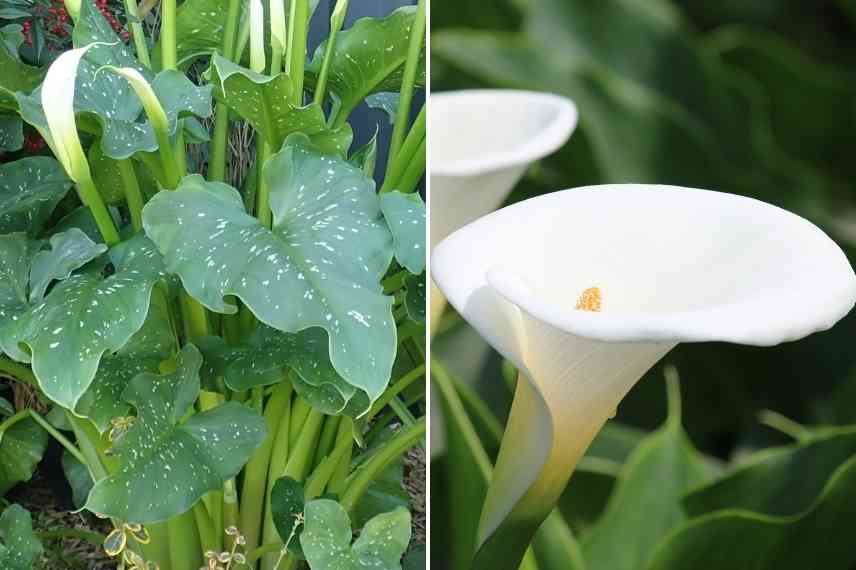
Arum ‘Himalaya’
-
Digiplexis
To bring beautiful blooms over a long period, with a look that is both graphic and natural, consider Digiplexis. These plants, which could be confused with foxgloves due to their long flower spikes (they are a cross with the Canary Island foxglove), can also grow up to nearly 1 m. The tubular flowers along the stem, in shades of pink to orange-yellow, are perfect for creating a lovely countryside atmosphere on your terrace, with a profusion of flowers from June until frost. You will plant them in a large pot that allows them to display their generous presence and their soft yet vibrant tones. Digiplexis grow quickly and behave like foxgloves, as biennial plants.
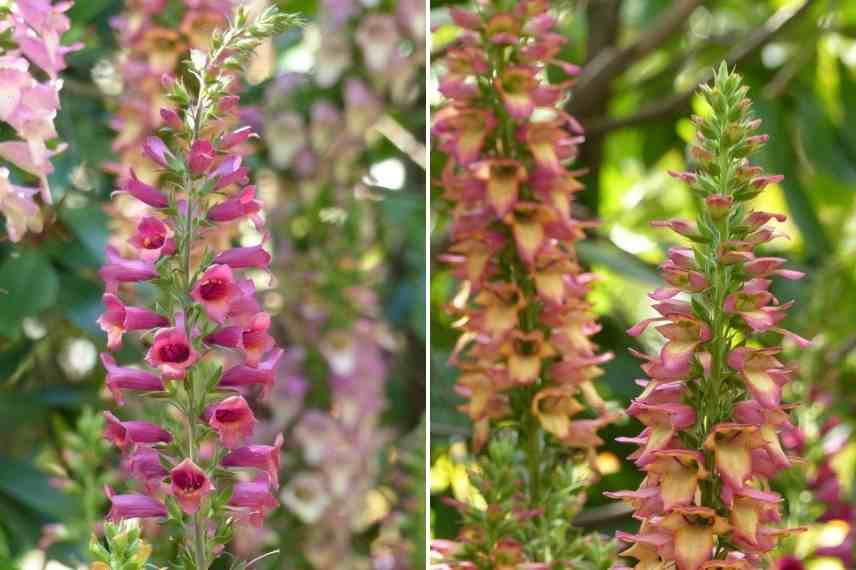
Digiplexis ‘Illumination Raspberry’ and Digiplexis ‘Illumination Flame’
-
Muehlenbeckia
Here is a perennial that could almost be mistaken for a small shrub or a climber, as Muehlenbeckia can climb up to 2 m or 3 m high (or more if allowed to spread!), creating a charming topiary on a terrace. This plant from New Zealand offers an ultra-light and elegant appearance thanks to the multitude of small green leaves that compose it, and its fine, twisted contrasting branches. It thrives in partial shade but could also be included among plants suitable for full sun or north-facing positions, as it adapts to many situations. The Muehlenbeckia complexa is semi-evergreen, retaining its foliage in mild climates: the plant withstands temperatures down to -10°C. In pots, it is truly chic and quite structural due to its trailing… or climbing habit, which you can prune to your liking, and can be installed in a large planter or hanging on the wall adjacent to your terrace. It just needs well-draining soil and is not afraid of sea spray or wind. A few more advantages to convince you: it grows very quickly, is melliferous with its delicate summer flowering, and is particularly drought-resistant!
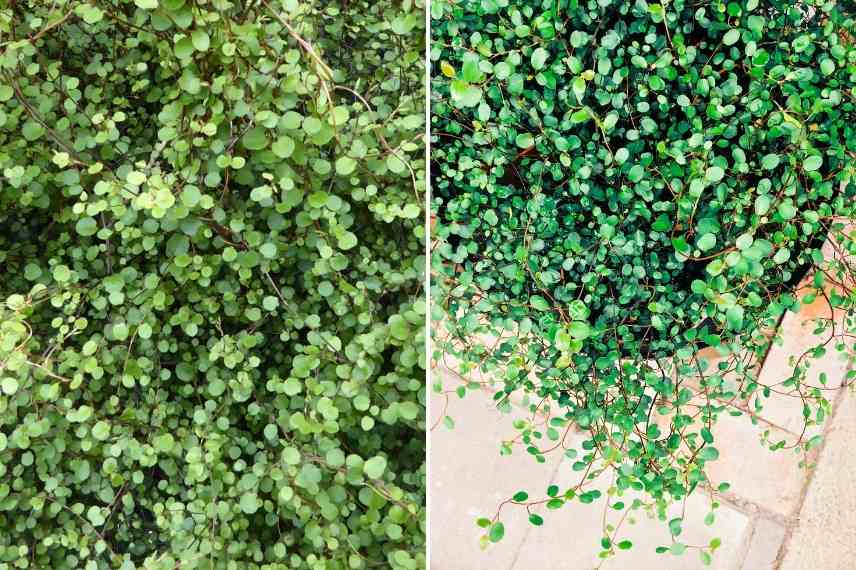
Muehlenbeckia complexa (© Gwenaëlle David) and Muehlenbeckia axillaris
-
And more…
Of course, there is a wide range of perennials that can thrive in pots on a west-facing terrace: Euphorbias like the very beautiful ‘Fireglow’ with warm tones, Potentillas, Liriopes, the lilliput version of Buenos Aires verbena ‘Lollipop’, Daylilies, hardy geraniums, certain ferns, etc. Bulbous plants like ornamental garlic, Crocosmias, cannas, or tulips will also thrive well in pots in the west.
Shrubs
-
Choisya ternata
The Mexican Orange Blossom is a staple for partially shaded situations and thrives well when grown in pots: it makes a superb rounded specimen for a terrace receiving afternoon sun, even if it is hot (it is also comfortable in slightly more shade or full sun, but flowers better in sunny conditions). This evergreen bush lives up to its name, being fragrant with the scent of orange flowers that can even be overwhelming for some, but I find them delightful, lasting for several weeks at the end of spring. If pruned after flowering, it will bloom again, albeit less spectacularly, in September. Several cultivars are interesting for pot cultivation, particularly the compact forms (about 1.20 m at ripeness) and unique for their fine foliage such as ‘Aztec Pearl’ or ‘White Dazzler’, ‘Aztec Gold’ with a more golden hue, or those with slightly pink flowers like ‘Apple Blossom’.
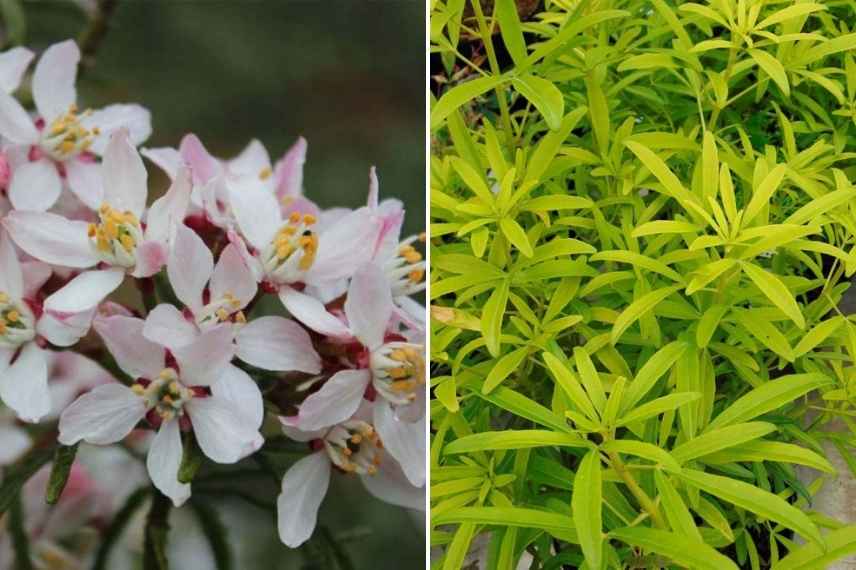
Choisya ‘Apple Blossom’ and Choisya ‘Aztec Gold’
→ Discover our advice sheet: Growing the Mexican Orange Blossom in a Pot
-
Ceanothus pallidus ‘Marie Rose’
Ceanothus is often associated with planting in the ground in gardens, but it can also be installed in large containers on the terrace. Ideally, one should choose a deciduous variety, more resistant to cold, and of medium size, such as Ceanothus ‘Marie Rose’, which is absolutely charming with its inflorescences gathered in airy thyrses of pale pink. It will reach about 1.30 m in a pot, and you can enjoy its flowering for about 2 months, between June and July. If you wish to contain its size, it prunes very well in early spring. This variety can withstand temperatures of around -15°C in a container. Surround it with evergreens like Pittosporum, buxus, or Arbutus unedo ‘Compacta’. For a blue and evergreen version, Ceanothus ‘Blue Diamond’ will be perfect in milder regions, as it withstands -10°C.
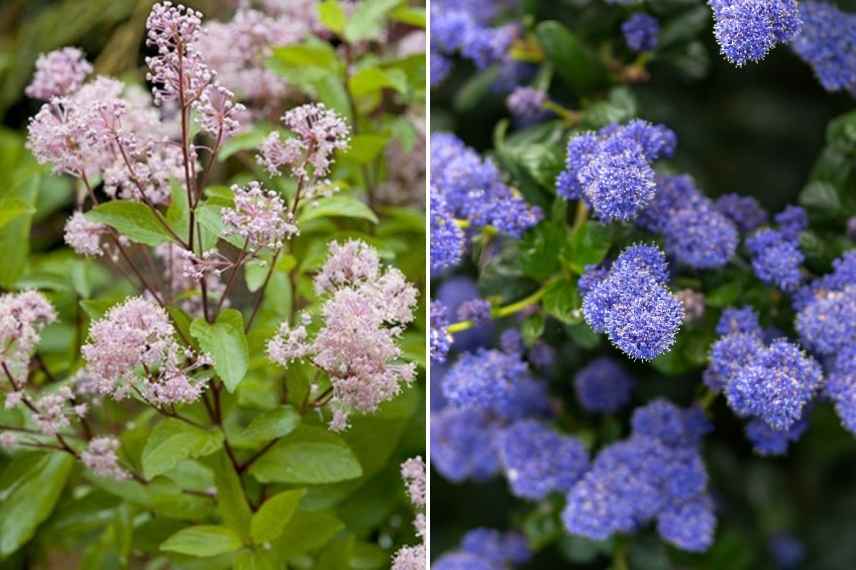
Ceanothus pallidus ‘Marie Rose’ and Ceanothus thyrsiflorus repens
-
Deutzia
This is also a deciduous shrub closely associated with gardens, as it is highly ornamental for creating a hedge or enhancing a flowerbed. However, many species and varieties of Deutzias have a relatively compact habit that is completely adaptable to a west-facing terrace. The Deutzias will find enough sun to fully develop their delicate white or pink spring flowering. The Deutzia hybrid ‘Raspberry Sundae’ is covered in beautiful bicoloured white and pink flowers from April to June, and will ultimately measure 1 m in all directions in a large pot, while Deutzia gracilis will offer pure white flowers in May. The Deutzia x rosea ‘Carminea’ will bloom abundantly in a lovely pale pink and will take on purplish hues in the foliage in autumn.
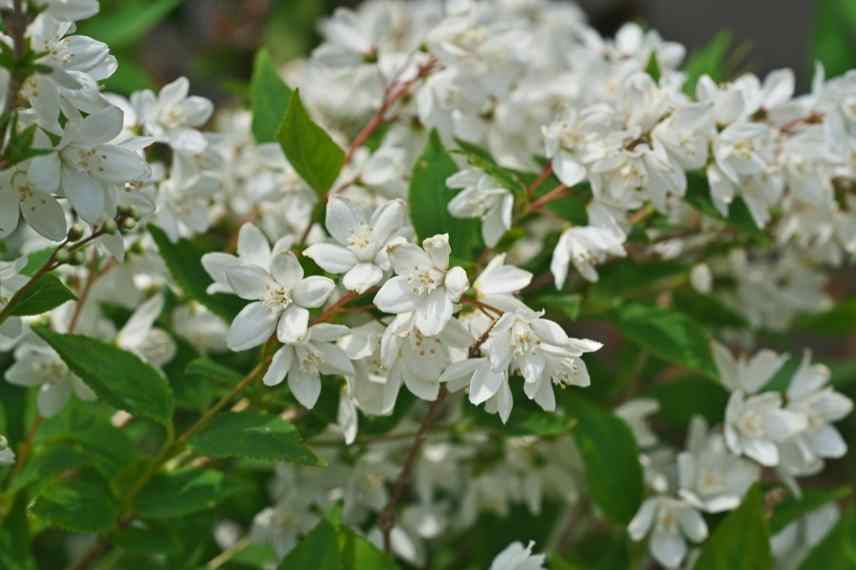
Deutzia gracilis
-
Hydrangea macrophylla
The Hydrangea macrophylla, with its large leaves and ball-shaped inflorescences, is very suitable for planting in a west-facing position: although they are hardy, they are sensitive to late winter frosts and will therefore be protected in this exposure. Many remain small in size and can adorn a terrace when grown in pots. There are many to choose from, but I particularly recommend Hydrangea macrophylla ‘Miss Saori’, truly stunning with its fluffy bright pink and white balls, or Hydrangea macrophylla ‘Magical Jade’, with its astonishing bicoloured cream and green hues.
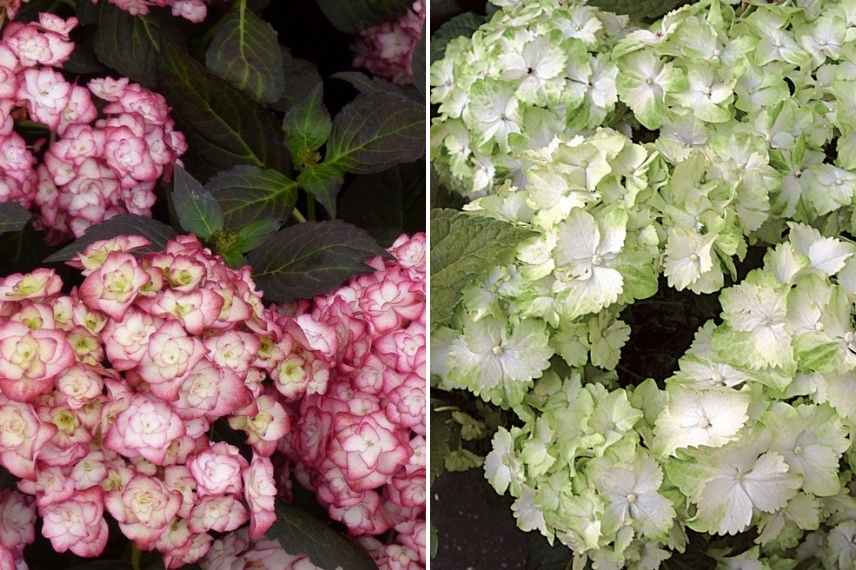
Hydrangeas macrophylla ‘Miss Saori’ and ‘Magical Jade’
-
And more…
The list is obviously long, as many medium-sized shrubs thrive well in a west-facing position. Here are a few evergreens that will always make a lovely impact on a terrace: Arbutus unedo ‘Compacta’, Euonymus fortunei ‘Emerald Gaiety’ with its beautiful variegated white foliage, Escallonia, Halimium, Pittosporum tobira ‘Nanum’, a buxus, Abelia grandiflora ‘Caramel Charm’, Michelia ‘Fairy Lime’ in a large pot, and the must-haves – although deciduous – Lagerstroemias grown on stems and of small size (‘Mardi Gras’ or ‘Berlingot Menthe’).
Discover other Patio shrubs
View all →Available in 1 sizes
Available in 1 sizes
Available in 1 sizes
Available in 0 sizes
Available in 0 sizes
Available in 0 sizes
Available in 0 sizes
Available in 0 sizes
Available in 0 sizes
Climbing plants
A west-facing terrace is ideal for hosting climbing plants that thrive in the afternoon, particularly honeysuckles that will perfume the air even more in the evening. They receive enough warmth and light, just like clematis and medium-sized roses (care should be taken to shelter the planting pot of the clematis with a tuft of grass, for example).
Among the multitude of varieties that can climb on the terrace wall or on a pergola, why not plant a Lonicera heckrotii ‘Gold Flame’, which will enchant your summer evenings with its divine fragrance and stunning bright pink and orange flowering? It is hardy, adaptable to all regions, grows up to 3 m in height with a spread of only 1 m. Or the Clematis tangutica ‘Grace’, with its lovely cream and pink flowering, which will bloom on the terrace in late summer, during August and September?
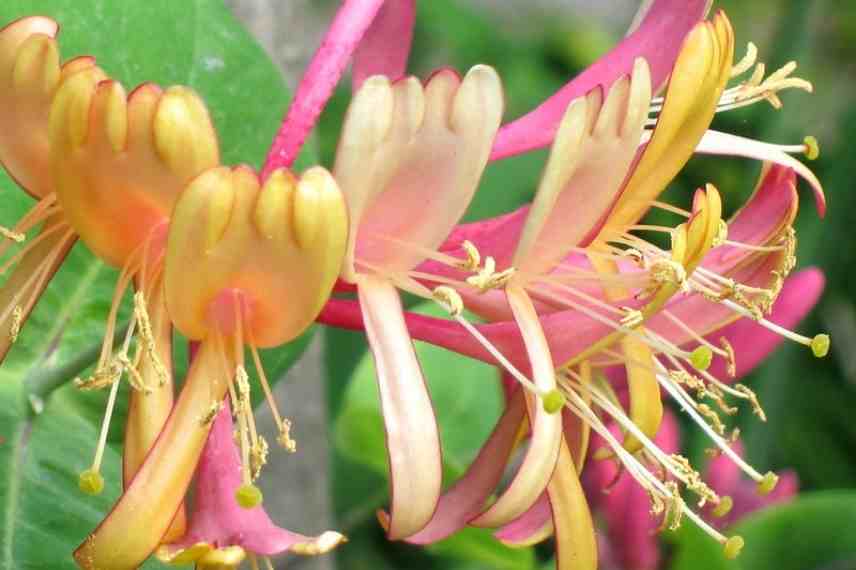
Lonicera heckrotii Gold Flame (© Cultivar 413)
→ Discover our range of climbing plants for pots
Grasses
Here again, the choice is quite vast, as although most grasses do not fear the blazing sun, they can thrive in afternoon sun only, such as the magical Stipa arundinacea, whose reddish hues will be all the more enhanced. A Carex comans ‘Bronze Form’ or a Carex testacea will also be beautifully highlighted by the low light of the evening.
Many grasses can actually adapt to pot or container cultivation and deserve a place on a west-facing terrace where they will bring modernity and dynamism: particularly select Stipas, Miscanthus, and Carex.
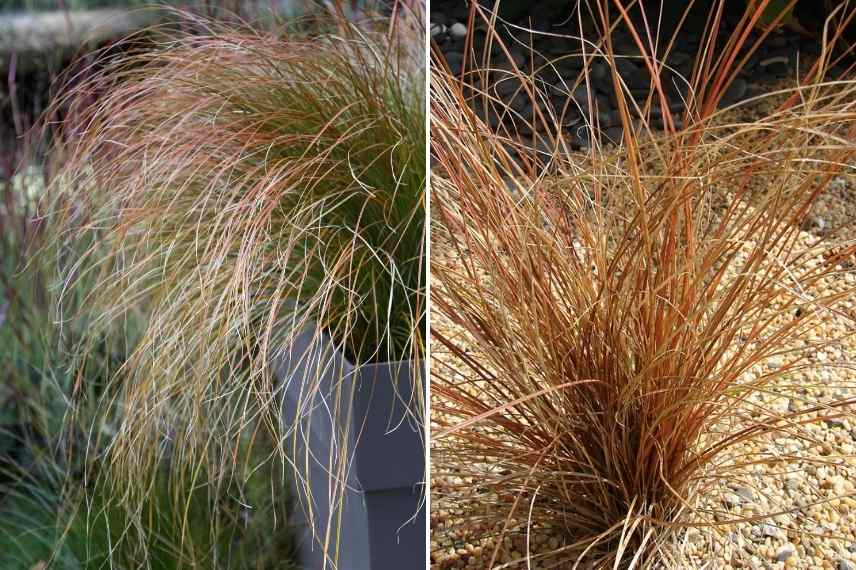
Carex testacea ‘Prairie Fire’ and Carex Comans (© Forest and Kim Starr)
→ Discover our range of grasses for pots
- Subscribe!
- Contents
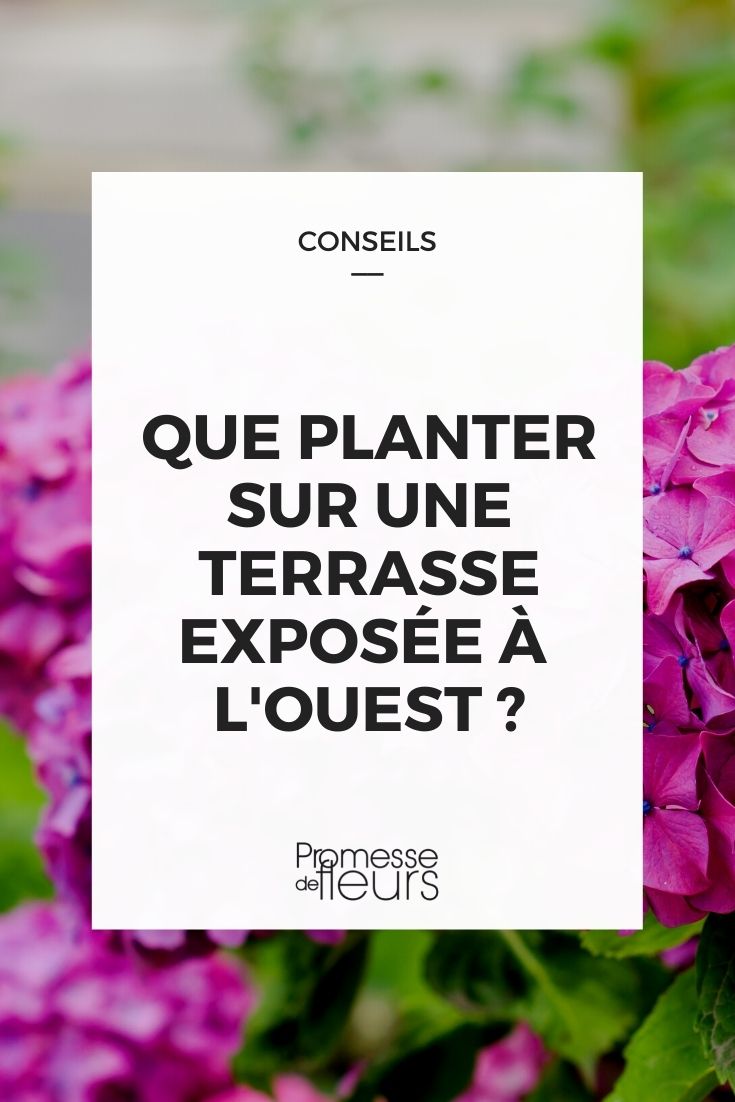































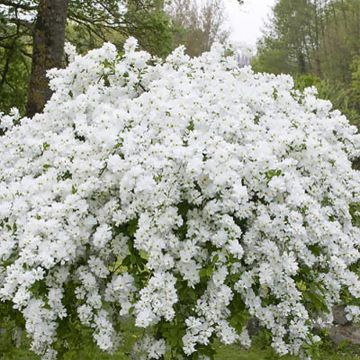


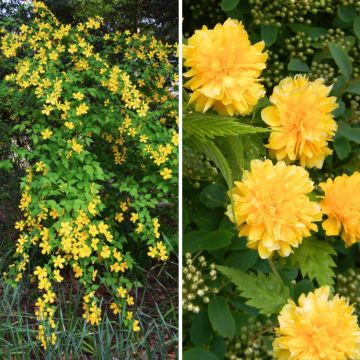
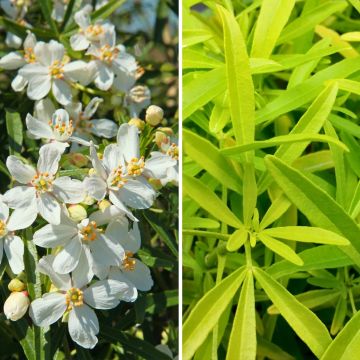

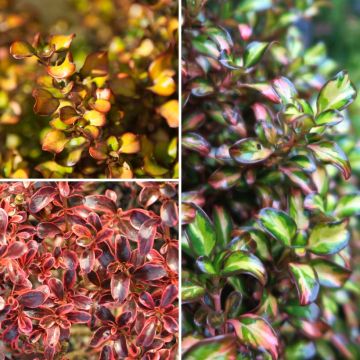
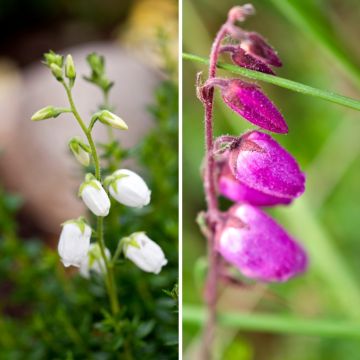
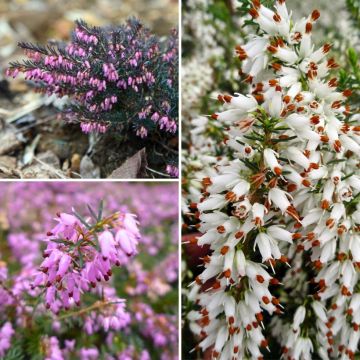
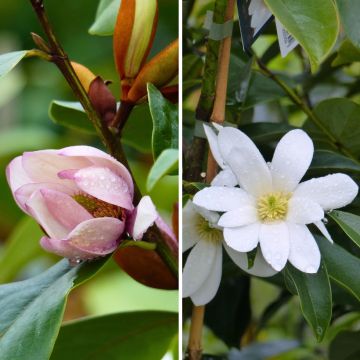
Comments